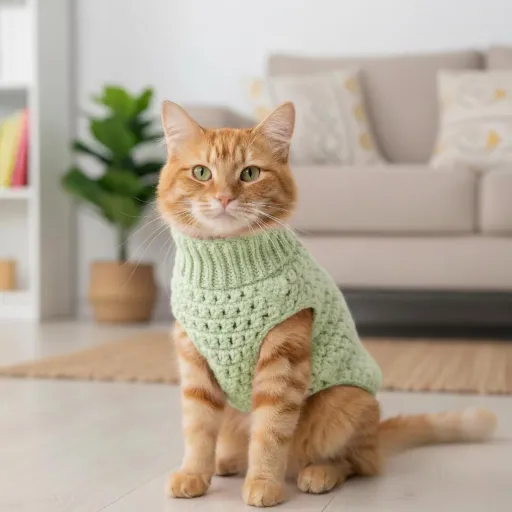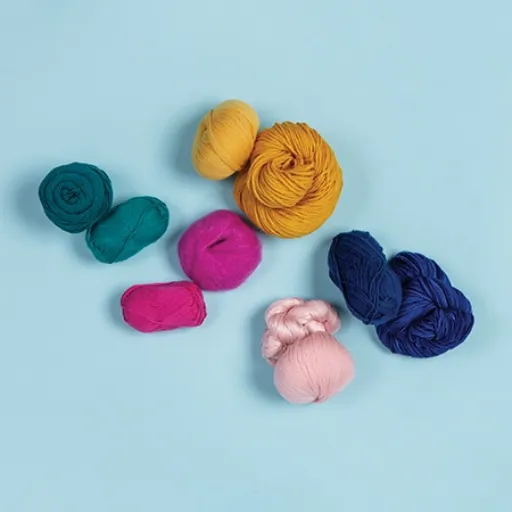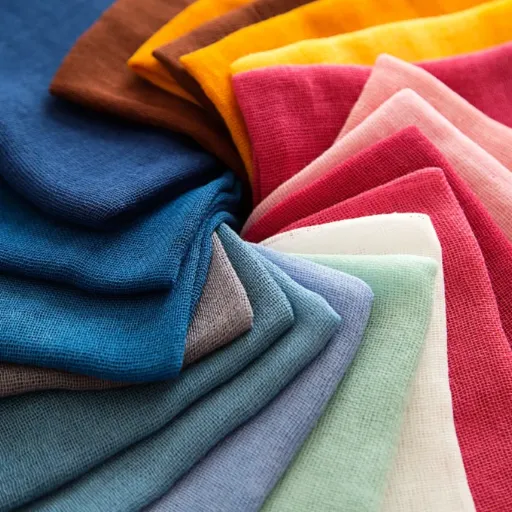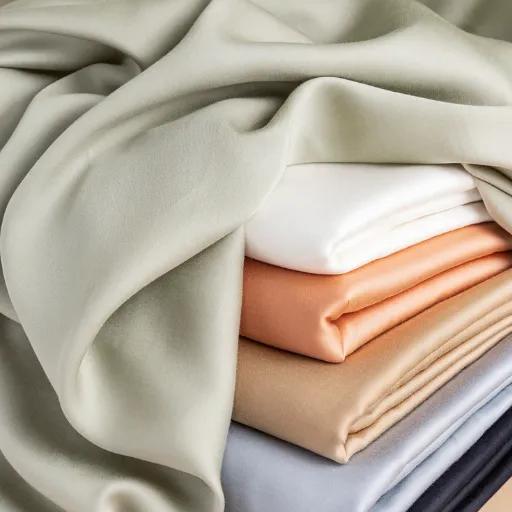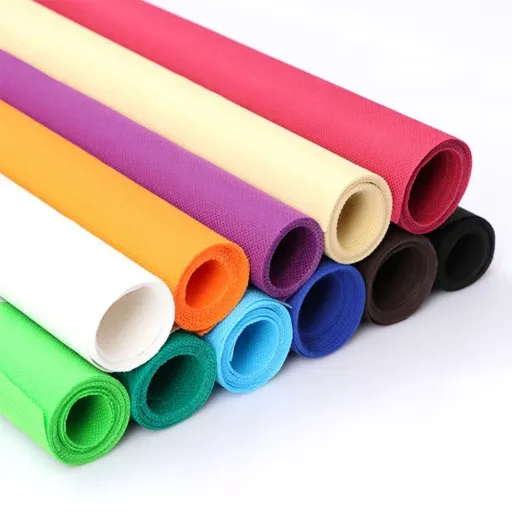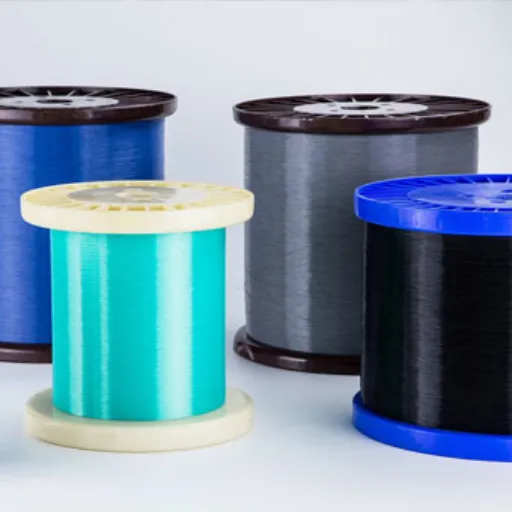The viscose textile has always got tremendous importance in the fabric world attributed to its attractable smoothness, adaptability, and decent prices. But what is viscose, and why has it suddenly come into so much demand in clothes and home furnishings? This comprehensive article will take you through the how, what, and why of viscose textile to unmask its origin, processing method, and advantages. Whether you’re a conscious shopper searching for a sustainable product or simply looking for fabric choices for your forthcoming projects, this guide will unveil everything there is to know regarding this outstanding fabric.
What is Viscose Fabric?
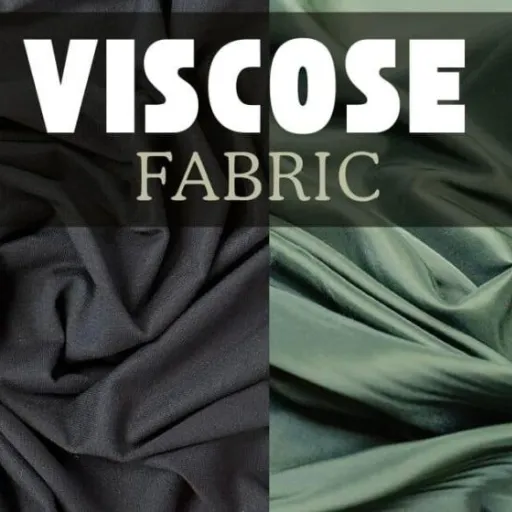
Definition of Viscose
Putting it simply, viscose is a kind of fabric material in the semi-synthetic category produced out of regenerated cellulose fibers, mostly from wood pulp. The cellulose is subjected to chemical treatment to convert natural cellulose into fiber that is diverted toward making textiles. Liked for the silk-like smoothness, viscose is sought after for its flexibility and economical nature.
Key Characteristics:
- Silk-like smoothness – Feels luxurious against the skin
- Breathability – Allows air circulation and moisture absorption
- Color absorption – Takes dyes beautifully for vibrant colors
- Economical – More affordable than natural silk
What really attracts people to viscose is that most of these soft fabrics can feel like a second skin to natural fibers such as cotton, silk, or wool, and they surely breathe just fine. The fabric is well-suited for warmer weather conditions as cool breezes can pass through and so does the sweat of the wearer. Likewise, it’s highly absorbing of colors, producing brightly colored and rich fabrics.
But environmentally, the use of chemicals has made this a concern. While the concern voices even more about biosafety, many methods are being formulated to make this process environmentally friendly. Still, a certain blend of its natural origin and synthetic qualities contributes to making viscose a top choice in the textile industry.
History of Viscose Production
Historical Timeline
Production of viscose dates to the late nineteenth century when scientists started trying to find some cheap but versatile alternative to natural silk. The invention created huge publicity and revolutionized the textile industry as factories began producing viscose for cloth, upholstery, and other textiles.
Due to its nature and ability to replicate a myriad of textures and appearances, viscose became widely accepted across Europe and North America. Its popularity, however, came with environmental and health-hazard-based concerns about viscose production. During those early development days, harmful and toxic chemicals were used in the manufacturing process, namely carbon disulfide, sodium hydroxide, and sulfuric acid.
Modern Developments: Contemporary attempts to solve these issues have led to the development of more modern production methods with minimal adverse impact, such as closed-loop systems. Today, viscose continues to serve as a versatile fabric with newer methods for producing more sustainably.
Viscose vs. Rayon: Understanding the Differences
| Aspect | Viscose | Rayon (General) |
|---|---|---|
| Classification | Specific type of rayon fiber | General category of semi-synthetic fibers |
| Production Method | Specific viscose treatment process using carbon disulfide | Includes lyocell, modal, and viscose methods |
| Environmental Impact | Traditional chemical-intensive process, newer closed-loop systems available | Varies by type – lyocell uses fewer hazardous chemicals |
| Key Properties | Silk-like texture, affordable, soft | Properties vary by specific fiber type |
Key Takeaway: While viscose and rayon are often used synonymously, viscose is actually a specific type of rayon. Understanding these differences helps consumers make informed decisions based on quality, environmental factors, and intended use.
How is Viscose Made?
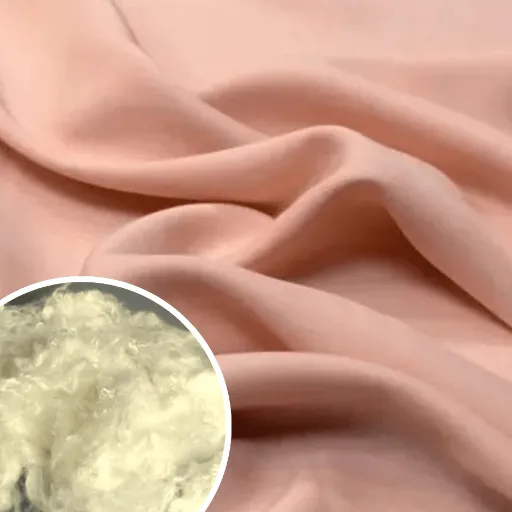
Raw Materials: Cellulose Sources
Viscose fiber comes mainly from natural cellulose, which is most often from wood pulp. The most commonly harvested trees are fast-growing species that are picked for their speedy growth and high cellulose content.
Primary Tree Sources:
- Beech – High cellulose content
- Pine – Fast-growing and renewable
- Eucalyptus – Sustainable when managed properly
Processing Steps:
- Breaking down raw plant material
- Removing lignin and hemicellulose
- Extracting pure cellulose fibers
- Preparing for viscose processing
Sustainability Focus
Sustainable sourcing of cellulose greatly contributes to lessening environmental impact. Responsible forestry practices supported by organizations working toward sustainable management protect biodiversity and reduce deforestation. Consumers are encouraged to look for certification processes and transparency in production.
The Manufacturing Process of Viscose
Step-by-Step Manufacturing Process
Cellulose Extraction
Wood is chipped into small pieces and treated to extract cellulose fibers. These fibers are purified and converted into brownish, soft sheets of alkali cellulose.
Alkali Treatment
The alkali cellulose is soaked in sodium hydroxide to impart absorbent characteristics, then shredded into tiny granular particles.
Aging and Chemical Treatment
Granules are aged under specified conditions, then treated with carbon disulfide to form cellulose xanthate.
Viscose Solution Formation
The cellulose xanthate is dissolved in more sodium hydroxide to form viscose – a thick, honey-like solution.
Fiber Formation
The viscose solution is forced through spinnerets into a sulfuric acid bath, converting it into solid filament fibers that are stretched, washed, and treated.
Conventional Viscose vs. Bamboo Viscose
Conventional Viscose
- 🌲 Made from wood pulp (spruce, pine, eucalyptus)
- ⚗️ Traditional chemical treatment process
- 🌍 Higher environmental impact
- 💰 Generally more economical
Bamboo Viscose
- 🎋 Made from bamboo cellulose
- 💧 Requires less water and pesticides
- ♻️ More sustainable raw material source
- ⚠️ Still uses similar chemical processes
Important Consideration
While bamboo viscose uses more sustainable raw materials, both types employ similar chemical processes. The environmental benefit depends on manufacturers implementing safe production processes with proper waste disposal and emission control. Always look for certification and transparency in production methods.
Characteristics of Viscose
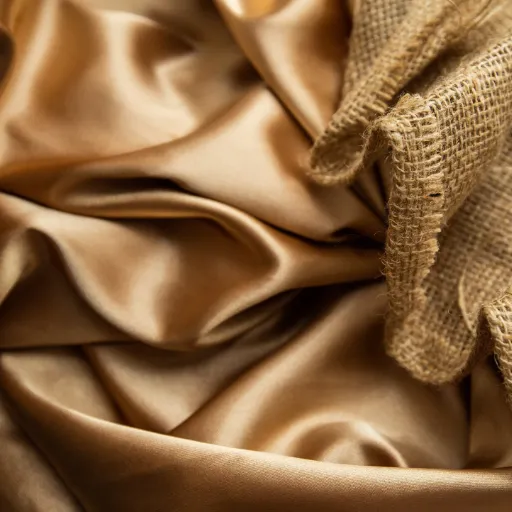
Physical Properties of Viscose Fabric
✨ Texture & Feel
Viscose is loved for its softness and smooth texture, similar to natural fibers like cotton or silk. The fabric flows and hangs effortlessly, creating a gorgeous, dynamic look for garments.
🌬️ Breathability
Excellent air circulation makes it suitable for warm climates and active wear. The fabric allows moisture absorption, enhancing comfort during wear.
⚠️ Durability Considerations
Viscose tends to weaken when wet, making it susceptible to damage during washing. Gentle care through hand washing or dry cleaning is recommended.
Chemical Properties and Behavior
Chemical Structure Impact
Viscose’s cellulose structure makes it highly absorbent, contributing to its breathability and moisture-wicking properties. However, this absorption can lead to shrinkage and texture changes if not handled properly during washing and drying.
⚠️ Sensitivity to Acids & Alkalis
Strong acidic or alkaline conditions can damage fibers, reducing strength and flexibility. Avoid harsh detergents and bleaching agents.
🔥 Heat Sensitivity
Flammable with no intrinsic fire-retardant properties. Heat exposure can weaken or deform fibers – avoid excessive heat during ironing or drying.
Viscose vs. Other Fabrics: A Comparison
| Property | Viscose | Cotton | Polyester | Silk |
|---|---|---|---|---|
| Softness | ⭐⭐⭐⭐⭐ | ⭐⭐⭐⭐ | ⭐⭐ | ⭐⭐⭐⭐⭐ |
| Breathability | ⭐⭐⭐⭐⭐ | ⭐⭐⭐⭐⭐ | ⭐⭐ | ⭐⭐⭐⭐ |
| Durability | ⭐⭐ | ⭐⭐⭐⭐⭐ | ⭐⭐⭐⭐⭐ | ⭐⭐⭐ |
| Moisture Absorption | ⭐⭐⭐⭐⭐ | ⭐⭐⭐⭐⭐ | ⭐ | ⭐⭐⭐ |
| Cost Effectiveness | ⭐⭐⭐⭐⭐ | ⭐⭐⭐⭐ | ⭐⭐⭐⭐⭐ | ⭐ |
| Drape Quality | ⭐⭐⭐⭐⭐ | ⭐⭐⭐ | ⭐⭐ | ⭐⭐⭐⭐⭐ |
Common Uses of Viscose
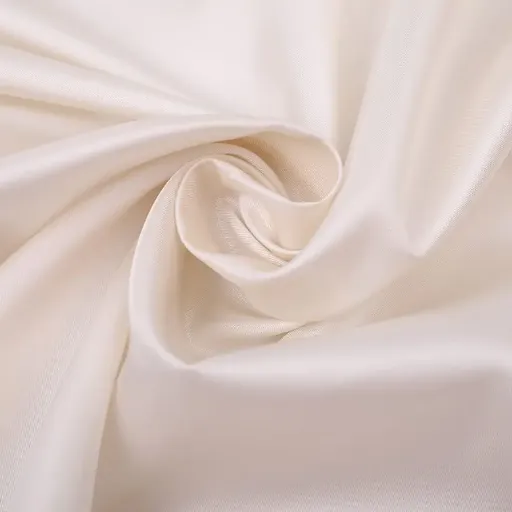
Fashion and Apparel Applications
👗 Formal Wear
- Dresses with luxurious drape
- Blouses and shirts
- Evening wear and formal attire
🏃 Active & Casual Wear
- Activewear and sportswear
- Lingerie and undergarments
- Casual everyday clothing
🎨 Fashion Accessories
- Scarves and wraps
- Fashion accessories
- Decorative elements
Why Fashion Loves Viscose
- Versatile Blending: Often combined with cotton or polyester for enhanced performance
- Color Vibrancy: Accepts dyes exceptionally well for bright, striking patterns
- Comfort Factor: Lightweight and moisture-wicking for all-day wear
- Cost Effective: Provides luxury feel at accessible price points
Home Textiles and Furnishings
🏠 Interior Applications
Window Treatments:
- Curtains and drapes
- Sheers and panels
Bedding:
- Bed sheets
- Pillowcases
Furniture:
- Upholstery
- Cushion covers
Decorative:
- Throws and blankets
- Decorative accents
✅ Advantages for Home Use
- Excellent dye absorption for vibrant colors
- Lightweight for easy handling
- Budget-friendly for decor updates
⚠️ Care Considerations
- May shrink with water or heat exposure
- Follow care labels carefully
- Control temperature and humidity
Specialty Uses of Viscose Fabric
🏥 Medical & Hygiene
- Medical wipes and supplies
- Hygiene products
- Disposable textiles
🏭 Industrial Applications
- Technical textiles
- Filtration materials
- Specialty fabrics
🎨 Creative Applications
- Art and craft projects
- Decorative elements
- Custom textile designs
Purchasing Viscose: What to Consider
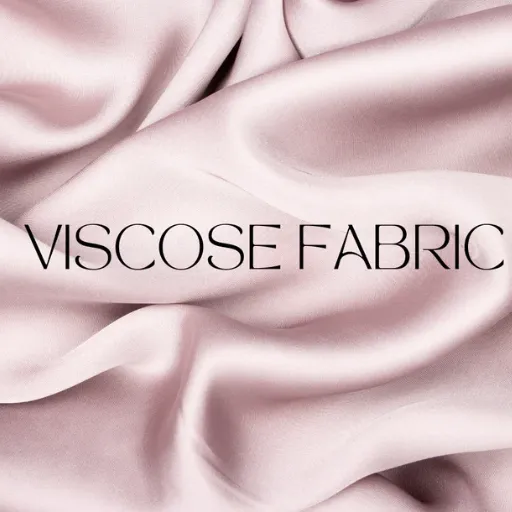
Factors in Identifying Quality Viscose Items
Quality Assessment Checklist
🤲 Texture & Feel
Look for: Softness, smoothness, silk-like finish
Avoid: Stiffness, rigidity, uneven surfaces
💪 Durability Check
Test: Gentle stretching, shape retention
Warning signs: Excessive pilling, fraying edges
🎨 Color Quality
Quality indicators: Bright, even colors
Red flags: Discoloration, uneven dyeing
💡 Pro Shopping Tips
- Check care instructions – quality viscose includes detailed care guidelines
- Read customer reviews about color retention and overall satisfaction
- Look for clear product descriptions mentioning the manufacturing process
- Inspect the fabric in good lighting to assess texture and color uniformity
Ethical and Sustainable Brands
🌱 Sustainable Viscose Production
Understanding the environmental impact and choosing responsible brands
🌳 Raw Material Sourcing
- Wood pulp from responsibly managed forests
- Certified sustainable forestry practices
- Prevention of deforestation
- Biodiversity protection
♻️ Production Methods
- Closed-loop systems to minimize waste
- Reduced chemical emissions
- Water conservation practices
- Safe disposal of byproducts
🔍 What to Look For When Shopping
Certifications:
- FSC (Forest Stewardship Council)
- OEKO-TEX standards
- TENCEL™ branded fibers
Transparency:
- Clear production process information
- Supply chain transparency
- Environmental impact reports
Consumer Tip: Brands showing responsibility in their production methods and sourcing practices help ensure your purchases align with environmental and social responsibility goals. Look for detailed information about their manufacturing processes and sustainability commitments.
The Status of Viscose in Fashion Trends
👗 Fashion Industry Perspective
How viscose has established itself as a versatile, affordable alternative to luxury fabrics
🎯 Key Advantages for Designers
- Versatility: Suitable for casual and high-fashion wear
- Drapeability: Excellent fall and movement
- Affordability: Cost-effective compared to silk
- Color vibrancy: Superior dye absorption
🌞 Seasonal Appeal
- Spring/Summer: Lightweight and breathable
- Layering: Perfect for transitional pieces
- Warm weather: Moisture-wicking properties
- Comfort: Soft against skin for extended wear
⚠️ Environmental Concerns in Fashion
The fashion industry faces increasing scrutiny over viscose production’s environmental impact. Brands are now required to seek more responsible production methods, including certified sustainable wood sources and reduced emissions. Modern consumers increasingly prioritize brands that demonstrate environmental responsibility and social accountability.
🔮 Future Trends
The demand for viscose continues to grow, but with greater emphasis on sustainable production methods. Consumers are actively seeking brands with proven track records in environmental responsibility, driving innovation in cleaner manufacturing processes and sustainable sourcing practices.
Frequently Asked Questions (FAQ)
Q: What is viscose made of?
A: Viscose comes from regenerated cellulose, a substance chiefly derived from wood pulp. This semi-synthetic material is subjected to a specific viscose treatment process wherein natural substances are converted into a beautiful textile product.
Q: How is the viscose process carried out?
A: The process involves dissolving wood pulp in a chemical solution, creating a viscous solution. This solution is then extruded through spinnerets to form fibers that are ready to be spun into viscose rayon fabric.
Q: Is viscose biodegradable?
A: Yes, viscose is biodegradable, unlike petrochemical-based synthetic fibers such as polyester and nylon. Its natural cellulose origin means it can decompose naturally over time under appropriate conditions.
Q: How does viscose compare to cotton?
A: Viscose fabric is frequently compared to cotton because they share similar characteristics: both are soft and comfortable to wear. While cotton is purely organic, viscose is a semi-synthetic fiber made from regenerated cellulose, offering similar comfort with different care requirements.
Q: What are the benefits of using viscose rayon?
A: Viscose rayon offers soft and lightweight textures with excellent drape and versatility in fashion. It’s commonly used as a substitute for silk and can be blended with other fibers like cotton and wool for enhanced performance.
Q: Are there different types of rayon fabrics?
A: Yes, different types of rayon fabrics include regular rayon, modal rayon, and lyocell. Each has different properties, with modal being particularly notable for its durability and moisture-wicking capabilities.
Q: How is viscose related to bamboo?
A: Viscose can be made from bamboo pulp as well, processed in much the same manner as wood pulp. Bamboo viscose is considered a more eco-friendly alternative to traditional rayon since bamboo grows quickly and is a sustainable plant resource.
🌟References
-
What is Viscose Fabric? Exploring How It’s Made – Dalston Mill Fabrics – Explains that viscose is made from wood pulp, typically from trees like pine, beech, and eucalyptus.
-
What Is Viscose: Understanding Your Fabrics – Contrado – Describes viscose as a cellulosic fiber made from wood pulp, similar to cotton or linen.
-
What is Bamboo Viscose? – Cozy Earth – Discusses how viscose and rayon are made from plant cellulose, including sources like cotton and bamboo.
-
Viscose Fabric Guide: Types, Properties, Application – Tissura – Highlights that viscose is made from artificially obtained cellulose fibers produced from wood pulp.
-
The Complete Guide to Rayon, Viscose, Modal, Lyocell, and Tencel – Yardblox – Explains the composition of viscose and its relationship to other rayon types.








